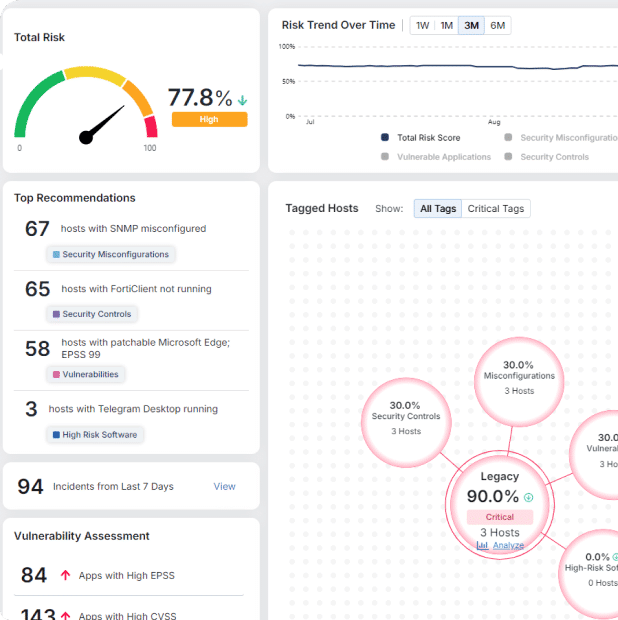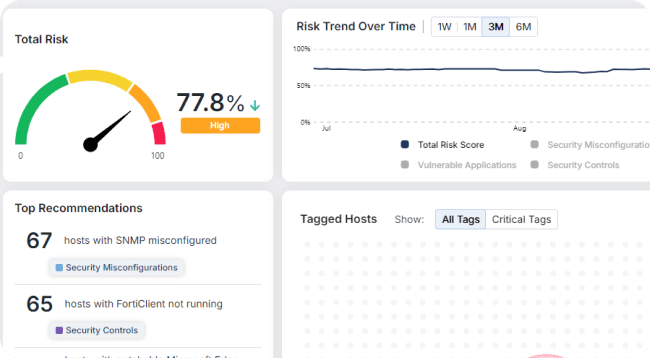How Do You Stop Supply Chain Attacks?

As organizations become ever more interconnected, software supply chain attacks have become a mainstream vector, not just a fringe threat.
In the first half of the year, 79 documented supply chain–related cyberattacks spanned 22 of 24 industry sectors globally. Together with projections that software supply chain attacks will continue rising sharply, this underscores that defending dependencies is now foundational to cyber resilience.
Risks and Trends: A More Complex Supply Chain Threat Landscape
The cyber software supply chain has never been more complex—or more targeted.
Threat actors are expanding beyond traditional vendor exploits to infiltrate the tools, code, and processes that connect today’s digital ecosystems. Below are the top trends shaping this evolving risk:
- Expansion of Attack Surface Through AI and Automation — Attackers are increasingly leveraging generative AI and automated tooling to identify and exploit weaknesses across vendor ecosystems. These tools make it easier to craft polymorphic malware, manipulate code repositories, and bypass static detection technologies that enterprises still rely on.
- Rising Exploitation of Developer Toolchains and Open Source Dependencies — The past year has seen a surge in attacks targeting CI/CD pipelines, open source repositories, and software packages used in development environments. Incidents like the XZ Utils and npm package compromises highlight how even a single poisoned dependency can cascade across thousands of applications.
- Deep-Tier Supplier Compromise — Adversaries are moving beyond primary suppliers to target smaller, less mature vendors further down the chain. These “tier three and four” software suppliers often lack advanced security controls, making them ideal entry points for stealthy, multi-stage intrusions that can remain undetected for months.
- Increased Targeting of Critical Infrastructure —Utilities, manufacturing, and transportation sectors continue to face heightened exposure as operational technology (OT) networks become more connected to IT systems. A single compromise in a third-party control system or maintenance provider can cause widespread service disruptions.
- Shift Toward Persistent and Multi-Phase Attacks — Modern software supply chain intrusions increasingly unfold in multiple phases—initial infiltration, privilege escalation, and delayed payload deployment. This persistence challenges traditional detection-based security, reinforcing the need for preemptive and runtime protection capabilities that can prevent compromise before it propagates.
Software supply chain security is no longer about prevention at the perimeter. It’s about building resilience within every component of the ecosystem, from code to runtime.

Phases of a Supply Chain Attack
A software supply chain attack is a multi-phase breach operation usually performed by the most sophisticated attack organizations, such as advanced persistent threat (APT) groups. The point of a software supply-chain attack is to allow unauthorized code execution inside what is presumed to be a protected system or a segmented/isolated network, leveraging the trusted relationship between the target organization and its software suppliers.
The First Phase of a Software Supply Chain Attack
In this phase, an attacker breaches the network of a vendor to the software platform the attacker wishes to compromise. This platform will often be a common IT management product used in the target organization. The goal of this phase is to find and reach the R&D or DevOps environment of this supplier and inject malicious code into the next software version or the data/configuration update that is soon to be distributed to the supplier’s customers.

The Second Phase of a Software Supply Chain Attack
Next the perpetrator leverages the fact that customers of this software platform enable the supplier to have direct and relatively easy remote access to their enterprise network to allow ongoing software updates and upgrades. The open interface between the supplier and the customer enables malicious code (which is bundled and hidden within the legitimate code coming from the supplier) to be injected into the target enterprise. This malicious code is seldom detected by the organization’s security systems, as it seemingly comes from a recognized and trusted source.
The Third Phase of a Software Supply Chain Attack
The fact that a supplier’s software platforms are typically used by the IT teams of the target organization means they have high-level, administration access rights within the organization’s network. This makes it easier for an attacker to implement the third phase of the attack. To achieve an attacker’s malicious goal(s), the third phase requires gaining control over an organization’s network and reaching the specific assets/resources they want to exploit by performing data exfiltration, component disablement, or inflicting physical damage. Unfortunately the malicious code is perceived to be a part of the trustworthy supplier software package and leverages its users’ access rights. This means a perpetrator can “roam around” without invoking security alerts related to unauthorized behavior until very late in the process—and usually not before much, or all of the damage is already done.
The Damage Footprint
Software Supply chain attacks have a very large potential “damage footprint” in that they can affect the entire user base of any popular software product. This means they can be used by politically motivated attack organizations not only to breach a relatively small number of high-value agencies and enterprises. They can also create havoc and even paralyze a nation by attacking a huge number of organizations using a widespread software product.
Recent incidents underscore how disruptive and far-reaching software supply chain compromises have become.
In 2025, Jaguar Land Rover was forced to halt factory production for weeks after a cyberattack on one of its key suppliers, a disruption that rippled across the global automotive ecosystem. In the retail sector, an attack on logistics software provider Blue Yonder impacted operations for major brands including Starbucks and Sainsbury’s, highlighting how a single compromised vendor can paralyze multiple downstream organizations.
The open source ecosystem has also been a major target: a large-scale JavaScript package compromise on npm injected malicious code into widely used dependencies, exposing millions of applications to potential data theft.
Even infrastructure and security vendors haven’t been immune—critical Fortinet vulnerabilities were exploited across tens of thousands of endpoints, proving that trusted security software itself can become an attack vector.
Each of these cases demonstrates how one weak link can cascade into operational disruption, data loss, and reputational damage across entire industries.

Software Supply Chain Attack Mitigation
When it comes to mitigating software supply chain risk, traditional security controls are necessary but no longer sufficient.
Attackers are increasingly embedding compromise deep into the software toolchain, dependencies, libraries, or build pipelines. Once those malicious artifacts reach your environment, prevention must shift from detection to preemption.
Here’s how a preemptive security posture, bolstered by Automated Moving Target Defense (AMTD) and deceptive techniques, can materially reduce your exposure:
- Infiltration Prevention Before Exploitation
Rather than waiting for malicious code or zero-day payloads to execute, AMTD dynamically mutates the memory space, re-randomizes code layout, and continuously shifts the attack surface. This unpredictable environment makes it vastly more difficult for adversaries to find a stable foothold—even if they deliver a poisoned component.
Morphisec’s Infiltration Protection layer defends against fileless attacks, credential theft, privilege escalation, and lateral tools (like PsExec/Mimikatz), blocking post-delivery exploitation before it can escalate.
In other words: even if a compromised library is deployed, the attacker’s subsequent exploit steps are frequently rendered ineffective. - Deception as a Force Multiplier
Deception techniques (e.g. fake endpoints, honey credentials, moving traps) create uncertainty for attackers and force them to expend time and effort probing false targets. This buys defenders critical detection and response time.
In the context of software supply chain risk, deceptive elements can be embedded at strategic junctures—within build pipelines, internal software repositories, or continuous integration environments—so that attackers who cross into your ecosystem trigger decoys rather than real assets. - Impact Protection & Containment
Even if an attacker somehow reaches payload execution, the next line of defense is Impact Protection. AMTD isolates memory execution, prevents tampering with critical assets, and blocks destructive or exfiltration routines before they cause extensive damage.
Because software supply chain attacks often aim to move laterally or persist for extended durations, stopping them early is paramount to avoiding widespread compromise. - Adaptive Exposure Management & Proactive Hardening
Preemptive security also involves continuously assessing the system state, configurations, and exposures—not just known vulnerabilities. Morphisec’s Adaptive Exposure Management module provides contextual visibility into high-risk software, misconfigurations, outdated dependencies, and privileged accounts.
By prioritizing risky software and automating configuration validation, you reduce the “uncovered surface” that attackers might exploit via your software supply chain. - Resilient Recovery with Forensic Assurance
In a software supply chain compromise, forensic insight is critical: knowing exactly what was touched, compromised, or altered helps you rebuild trust. Morphisec’s Adaptive Recovery capability preserves tamper-proof forensic artifacts while also enabling swift rollback or decryption recovery if needed.
This ensures that even in a worse-case scenario, your organization can recover confidently without losing critical trail data.
Resilience by Design
By combining layered capabilities with Morphisec’s comprehensive Anti-Ransomware Assurance Suite you shift your mitigations upstream of attacker tactics.
Rather than reacting to software supply chain attacks after they trigger, you materially reduce an adversary’s ability to operate inside your environment, even if they manage to infiltrate through a trusted component.
For deeper guidance on how Zero Trust architectures and deception technology like AMTD combine to deliver a resilient, ransomware-free posture, download The Ultimate Ransomware Strategy: Enabling Preemptive Cybersecurity Through Zero Trust with AMTD white paper.
Stay up-to-date
Get the latest resources, news, and threat research delivered to your inbox.





















